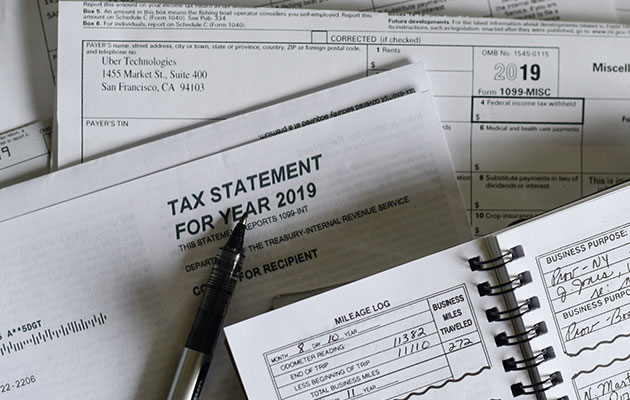-
Articles
Crypto Mining and Its Regulations
Ever since its conception, cryptocurrency mining (“crypto mining”) has attracted great interest from many entrepreneurs looking to make money off this up-and-coming trend of virtual currency. One of the most defining characteristics of crypto mining which has drawn so much attention is that it is essentially a process in which new virtual money is created and granted to the ‘miner’ of such virtual money; something an individual can never do in a fiat currency system. However, in the present day, crypto mining has become substantially harder and more costly due to increasing competition in this field. This is not to say that crypto mining is no longer profitable in all cases, but substantial knowledge and commitment are needed from the prospective miners in order to achieve any success in the crypto mining business. In addition, recent years have seen regulators begin to act regarding to crypto mining, ranging from outright banning to legalising crypto mining operations. Accordingly, prospective miners should take into account the regulatory trends around the world to assess its risk, depending on where the crypto mining operation is to be situated.
- 1.Brief Introduction to Crypto Mining
Crypto mining serves two primary functions in the cryptocurrency system: it serves as the process in which cryptocurrency transactions are validated to prevent the issue of double spending of digital currency, while simultaneously serving as the only way in which cryptocurrency is released into circulation.
Fundamentally, cryptocurrency like Bitcoin relies on blockchain technology, a decentralised processing and recording system, in order to determine the validity of transactions without the need for a central authority such as a central bank to monitor its system. Instead, each miner serves as an auditor for the system by competing to validate the transaction and adding it to the blockchain; a distributed ledger of verified transactions. To put it simply, the work of miners ensures that all transactions recorded in the blockchain are validated and fraudulent records are impossible or exceedingly difficult to add to the blockchain.
To incentivise the miners to perform such core function for the system, miners receive new coins as a reward for their work; hence, the term “mining” is used for this transaction validation process. This is essentially how cryptocurrencies are “mined” and released into circulation. However, only the miner who completes the validation process first is entitled to the reward. Thus, it is important that the miner possesses sufficient computing power to have a chance to receive the reward. To solve this problem, small miners may seek to form groups known as “mining pools”; to combine their computing powers in order to increase their chances of success and share the rewards among themselves.
Due to the increasing number of miners and regular development in mining technology, crypto mining has become substantially more competitive, demands a higher and higher amount of computing power to succeed and thus requires more investment compared to its early days. As such, the issues of cost and profitability must be carefully considered by any prospective miners, which will be further discussed below.
- 2. Profitability of Crypto Mining
There are several factors to consider when determining the profitability of crypto mining.
Firstly, the methods for crypto mining may result in varying hardware costs depending on the miner’s choices. A dedicated crypto mining component such as a GPU (graphic processing unit) or ASIC (application-specific integrated circuit) may range from Baht 20,000 to Baht 300,000 plus. Joining a mining pool may alleviate the need for top of the range hardware somewhat, but usually this also comes with a pool fee. Alternatively, miners may rent the mining components from professional mining operators for a certain amount of time in a method known as cloud mining.
Secondly, the electricity cost for running the crypto mining system, which can become substantial in the long run given the power-intensive nature of such operation. This may vary greatly between countries, which is why some countries become popular locations for crypto mining operations, as miners flock to the country with the cheapest electricity price.
Thirdly, the difficulty of crypto mining must be taken into consideration. The difficulty of crypto mining adjusts to the overall computing powers of miners in that cryptocurrency, with higher overall computing powers resulting in harder difficulty. Thus, higher difficulty of crypto mining would necessitate higher amount of investment from the miner. The difficulty level varies between types of cryptocurrency to be mined at any point in time.
Fourthly, the value of the mined cryptocurrency should be higher than the overall costs. That is to say, the profitability of crypto mining is always subject to the volatile nature of cryptocurrency.
- 3. Regulation of Crypto Mining in Various Countries
Apart from the inherent risk of crypto mining profitability, the government standpoint on crypto mining and cryptocurrency in general should be closely followed by prospective miners. The stance on crypto mining taken by the government of each country may range from being accommodating to outright banning crypto mining, which could spell the end for small mining businesses lacking the necessary funds to relocate.
China, once home to more than half the world’s bitcoin mining operations1 , has been cracking down on the crypto mining industry throughout the country since May and June this year. In such regard, China’s State Council cited the need to mitigate financial risk, while local authorities in China’s most active mining regions cited the misuse of electricity or usage of electricity from highly polluted source as the reasons for the crack down.
On the other end of the spectrum are mining-friendly countries like Kazakhstan or some states in the US such as Texas, whose policies see crypto mining businesses as a potential boon to their economy. Kazakhstan, with the second largest bitcoin mining industry after the influx of Chinese crypto miners following the recent crack down, formally legalised crypto mining in 2020, confirming its legal status, while amending the tax code to allow for the taxation of crypto mining based on the miner’s amount of electricity consumption. This welcoming attitude is subject to change, however, as the recent influx of Chinese crypto miners has pushed the demand for energy to its limit, forcing the government to push for a new draft law to ration electricity going to new crypto mines.
This seems to be the trend in countries where crypto mining businesses begin to take root. Even if the governments of such countries maintain a friendly or at least neutral stance to crypto mining, intensive energy consumption from mining may force government interventions to ration the amount of electricity supplied to crypto miners. This is the case in Iran, where a licensing regime has been established for the crypto mining business; however, the blackouts which occurred in summer this year forced the government to issue a four-month ban on all mining operations.
- 4. Status of Crypto Mining in Thailand
Thailand has recognised cryptocurrency as a form of “digital asset” under the Emergency Decree on Digital Asset Businesses B.E. 2561 (2018)2 . However, there are still no regulations specifically regarding crypto mining operation as of the date of this article. Moreover, there are no regulations which aim to restrict or ration electricity usage to prevent overconsumption by crypto mining operations. Given that Thailand does not host large amounts of mining operations compared to the countries above, this may not come as a surprise. Currently, the legislative committee of the Ministry of Energy is considering issuing a policy to support mining businesses by reducing the electricity fee/rate for the miners. Although nothing is in writing yet, it is a good start for the mining business in Thailand to learn that the government is looking to support crypto miners. More regulations may be issued in the future, if the number of miners increase and regulators become aware of the energy-intensive nature of a large-scale crypto mining business.
This is intended merely to provide a regulatory overview and not to be comprehensive, nor to provide legal advice. Should you have any questions on this or on other areas of law, please do not hesitate to contact any of the authors.
Contributed by Jirapong Sriwat, Apinya Sarntikasem & Pruk Chaweekulrath
- 1 In August 2021, according to the Cambridge Bitcoin Electricity Consumption Index (CBECI), the top three countries with the highest share of global hash rate (i.e. computing power) are (1) United States (35.4%); (2) Kazakhstan (18.1%); and (3) Russian Federation (11.2%).
- 2 Section 3 of the Emergency Decree on Digital Asset Business 2018





